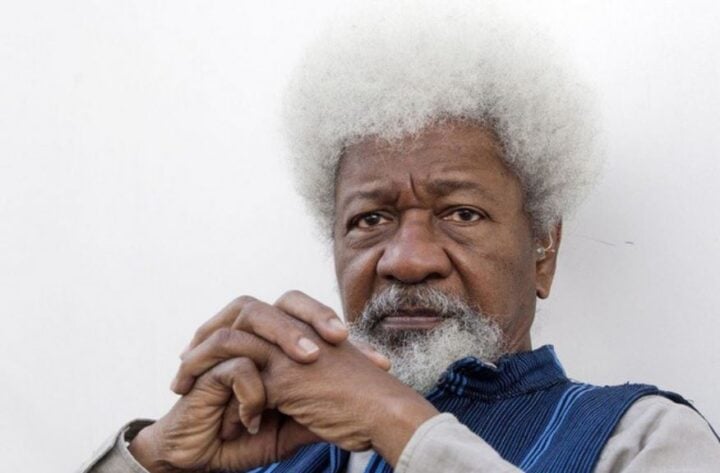Climbing Mount Everest may get even harder
Last month, as the 2025 climbing season began on Mount Everest, Nepal’s upper house of Parliament introduced a tourism bill that includes a suite of new rules that would significantly raise the bar for who is allowed to attempt the mountain, who can guide, and how much it will cost.
This year’s proposal includes a mandate that Everest hopefuls must first climb a 7,000-meter peak located in Nepal, as well as requirements for all guides to be Nepalese citizens, for medical certificates confirming good health to be obtained from approved in-country facilities, new garbage fees, and insurance to cover the costly removal of dead bodies from the mountain. The Washington Post reported that the cost of removing a dead body from Mount Everest ranges anywhere between $30,000-$70,000.
Announcements like this happen almost every year: The government floats new rules intended to improve safety and accountability on the peak, such as banning solo climbers and helicopters, or requiring tracking chips and feces removal. But they’re rarely implemented. This is due to pushback from guiding companies, and an inability to pass the proposed legislation. The current bill is still in draft form and would still need to go through both houses of Parliament, meaning that changes are likely.
(National Geographic crew finds clues to Everest’s lost explorer, Sandy Irvine)

A high-altitude expedition team crosses a crevasse on Mount Everest.
Photograph by Mark Fisher, Nat Geo Image Collection
The most controversial rules are the 7,000-meter peak requirement and the Nepali guide requirement. Both rules have been proposed before, or are very similar to previous proposals, but have never been passed into law.
According to Lakpa Rita Sherpa, who guided on Mount Everest for two decades and has summited the peak 17 times, some of these new ideas are generally good—such as making sure climbers have some experience at altitude—but similar ones have been proposed in the past and “they’ve never been passed or enforced.” He cited the difficulty of implementing these rules, which would require the government to track compliance across hundreds of companies and climbers, amidst high turnover in the Ministry of Tourism and the prevalence of bribery in the country. (The Ministry did not respond to a request for comment on alleged bribery in Nepal.)
“The reason they do it is to promote business, and to give the impression that they’re trying to make mountain climbing in Nepal safer in order to attract more people to come,” said Alan Arnette, who summited Everest in 2011 and is a longtime Everest blogger, and who has been keeping track of these annual rule proposals for over a decade. “The reason that it doesn't get implemented is because the operators don't follow the rules, and then the government doesn't enforce the rules—because everybody knows that if they enforce some of these rules that it would cause business to drop.”
The Ministry of Culture, Tourism and Civil Aviation and the Nepal Tourism Board did not respond to requests for comment.

Helicopters land and take off from the heli pad at Base Camp amidst rescues of injured climbers from Camp 2.
Photograph by Max Lowe, Nat Geo Image Collecion
Tourism is one of the largest industries in Nepal, and Mount Everest—the world’s tallest peak—is its crown jewel. According to the most recent tourism data, there are 374 climbers from 49 countries on Mount Everest this year, which has generated $4 million in royalties from permit fees alone. (Compared to $2.48 million for 359 people in 2015).
As high numbers of climbers continue to flock to the peak each year, the country reaps economic benefits but also has to reckon with the issues it brings—like on-mountain traffic jams, issues with trash and waste management, and increased fatalities. In 2023, 18 climbers died on Everest, and in 2024 eight climbers died. Some of the most common causes of death on the mountain are acute mountain sickness (AMS), falls, illness/exhaustion, disappearance, and avalanches. With an increased number of people on the mountain, support staff must ferry a higher volume of gear through the dangerous Khumbu Icefall—the location of an avalanche that killed 16 Sherpas in 2015 while they were doing just that.
(Microplastics found near Everest’s peak)
That same year, citing safety reasons, Alpenglow Expeditions moved its Everest expeditions from the South Side of the peak in Nepal to the North Side, in Tibet, writing that the Nepalese side “has become overcrowded with inexperienced team members and unqualified guides.” The North Side is far less crowded and far more rigid when it comes to rules, said Lakpa Rita. “In China, you have to follow the rules no matter what,” he said. “If you don’t follow them, you won’t get a permit to climb.”
ExplorersWeb reported in September 2024 rules set by the China-Tibet Mountaineering Association (CTMA) that stipulate climbers must submit a climbing resume and medical certificate, have climbed a 7,000-meter peak, be accompanied by a professional mountain guide, and use oxygen above 7,000 meters. (In 2016, Melissa Arnot Reid became the first American woman to summit Everest without supplemental oxygen. She climbed from the Tibet side.)

Two climbers participate in an early morning trek in the Khumbu Icefall with Pumori Peak illuminated in the background.
Photograph by Eric Daft, Nat Geo Image Collection

An expedition member steps across a bridge of aluminum ladders lashed together above a crevasse in the Khumbu Icefall.
Photograph by Andy Bardon, Nat Geo Image Collection
One of the more controversial proposals is that climbers must have successfully summited one of the 7,000-meter peaks within Nepal before attempting Everest. This rule would not count summits of 7,000-meter peaks in other countries, such as Denali or Aconcagua, or the popular prep climb of Nepal’s Ama Dablam (just shy of the requirement at 6,812 meters).
While the aim is to ensure that only those with proven high-altitude experience are allowed on the mountain following several deadly seasons marked by overcrowding and underprepared clients, Arnette said that many of the accepted 7,000-meter peaks are “remote and dangerous.” They include peaks like Annapurna IV, Api Himal, Tilicho Peak, and Baruntse. There should be leeway for popular peaks, like Denali and Aconcagua to count toward this requirement, he said.
The reaction from the climbing community has been positive in regard to increasing the experience level of Everest hopefuls, and the pushback is mostly around the specifics of the rule and which peaks count. Garrett Madison of Madison Mountaineering told CNN that a 6,500-meter anywhere in the world would be a better idea.
“We are generally in favor of any rules that would increase the skills and experience of aspiring Everest climbers,” said Suze Kelly, Director of Adventure Consultants, a New Zealand-based guiding company. “And would thus discourage people from rocking up with the approach that they can attempt the summit with no prior experience, as we see each year with many of the low-cost outfitters who are prolific in Nepal.” There have been many articles written about inexperienced climbers on the peak putting themselves or others in danger—Lakpa Rita Sherpa said he’s seen people who’ve never put on a crampon before who come to attempt the summit.
This type of climbing prerequisite has been floated a few times over the past 30 years, with the government proposing a requirement for climbers to summit a 6,000-meter peak before Everest. The rule was discarded following pushback from expedition companies and climbers. “The reason people don’t want to cut the numbers on Everest is they’re worried they’ll lose work,” said Lakpa Rita, who has spoken with officials in the past to find ways to address overcrowding. “It’s all about the money.”
(What to know about climbing the world’s tallest mountain)
All climbers would need to submit a medical certificate from within the last month, and from a government-approved medical institution in Nepal to confirm they’re in good health. This would require a person to pay for an expedition, travel to Nepal, and perhaps be told they’re not in good enough health to climb.
Arnette thinks that regardless of the law, it’s a good idea to get a rigorous health check prior to climbing—like a cardiac stress test for climbers over 50, and a check of iron levels for female climbers.

Head lamps illuminate the path that climbers take as they move up the Khumbu Icefall above Everest Base Camp in the early morning hours.
Photograph by Brittany Mumma, Nat Geo Image Collection
The rule that sirdars (head Sherpa), high-altitude guides, and helpers on expeditions must be Nepali citizens has been proposed before, and similar policies exist in other countries with high-altitude tourism (Ecuador has a similar mandate requiring the use of local guides on certain peaks). On Washington’s Mount Rainier, there are only three American guide services that are
allowed to operateon the mountain and 15 guide services that can apply for single trips on the mountain.
Lakpa Rita appreciates that proposals like this would give a Nepalese guide or employee better opportunities, and the ability to make more money, but emphasized that it would be difficult to monitor and enforce.
If attempting a new route on Mount Everest, climbers must get permission from the Ministry of Tourism. Climbers must stick to that route and can only reroute in case of an emergency and with the approval of a government liaison officer. Climbers who are attempting any kind of record must declare it in advance.
(Tidying up the top of the world)
A new insurance requirement will cover the costly, and often dangerous, removal of dead bodies from the mountain. And to better address the problem of trash on the mountain, the $4,000 refundable garbage deposit will be replaced with a non-refundable garbage fee, and the Ministry of Tourism will manage and remove trash from the peak. According to Lakpa Rita, rules like this that focus on the compliance of expedition companies versus tracking medical and summit certificates for each individual climber, are more likely to succeed.
A rule that Lakpa Rita said is being applied is the recent requirement to bring feces off the mountain using human waste bags. He said he did video chats with local officials to tell them how to execute this. When he was sirdar for Seattle-based Alpine Ascents International he required his Sherpas to use these bags on the mountain, even before any rules were in place. “For things like this to work,” he said, “the expedition companies have to be very honest.” In 2015 the Washington Post reported that climbers were leaving some 26,500 pounds of feces every season, calling the peak a “fecal time bomb.”
Whether any of the recent proposals will be implemented—and more importantly, enforced—remains uncertain. Arnette encourages climbers to take a look at the proposed rules, decide what makes sense personally, and figure out how to apply them yourself. Many guiding companies, like Alpine Ascents International and Furtenbach Adventures, already require their Everest clients to have high-altitude experience. For now, this season on Everest is coming to a close. Arnette wrote on his blog that total Everest summits, from both sides of the peak, total “at least 525 people.”
Sonal Schneider contributed additional research.











